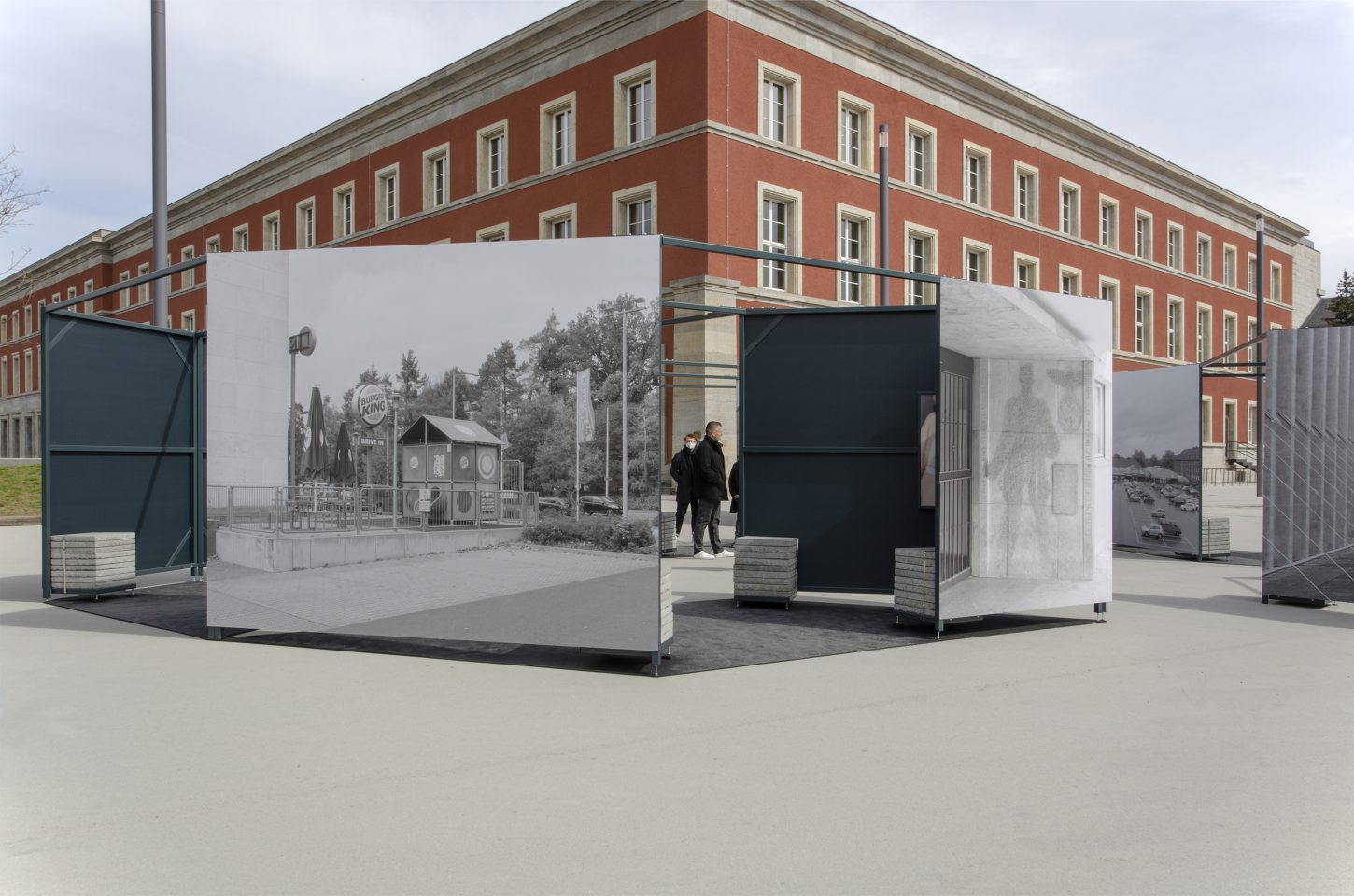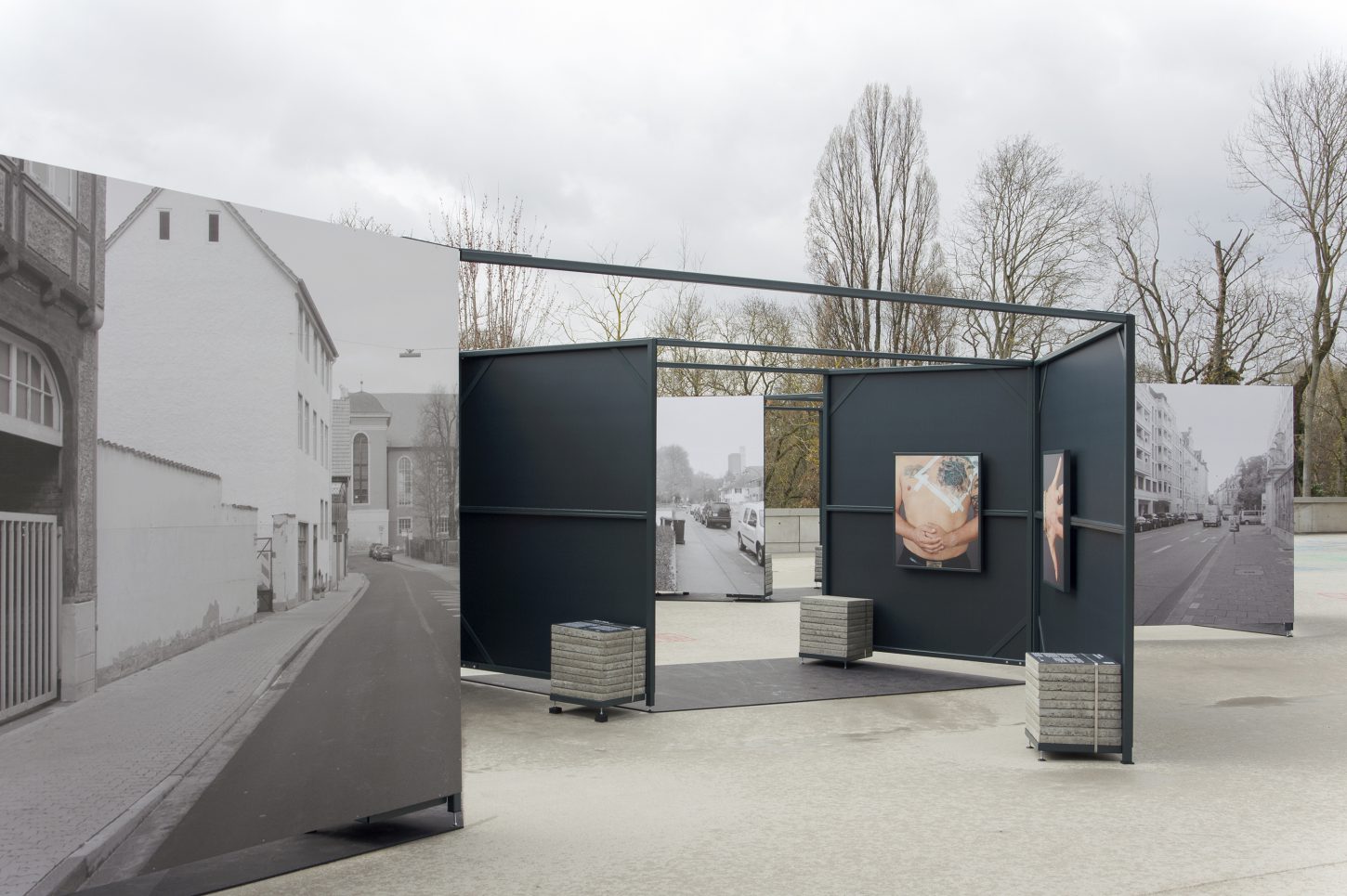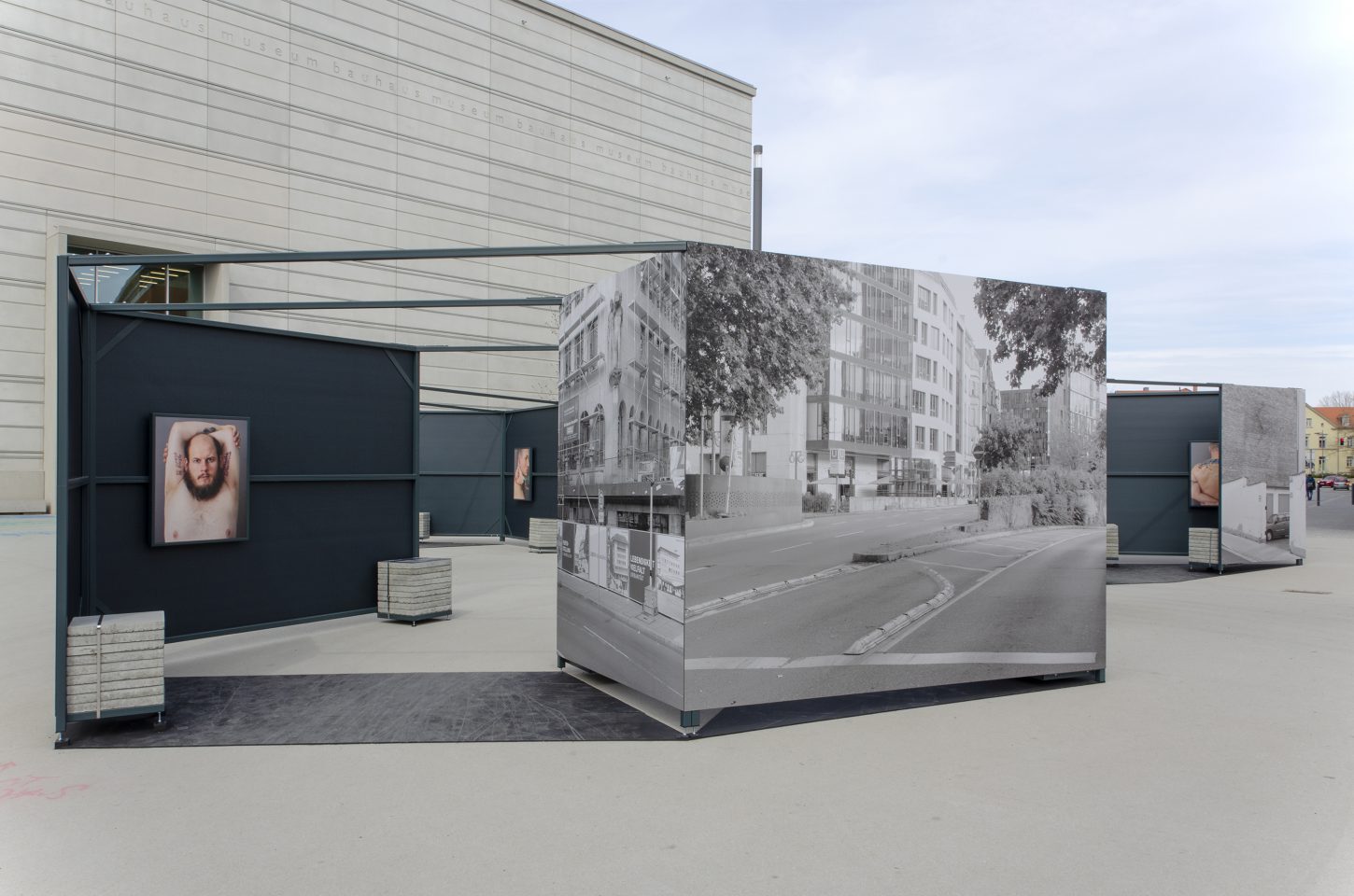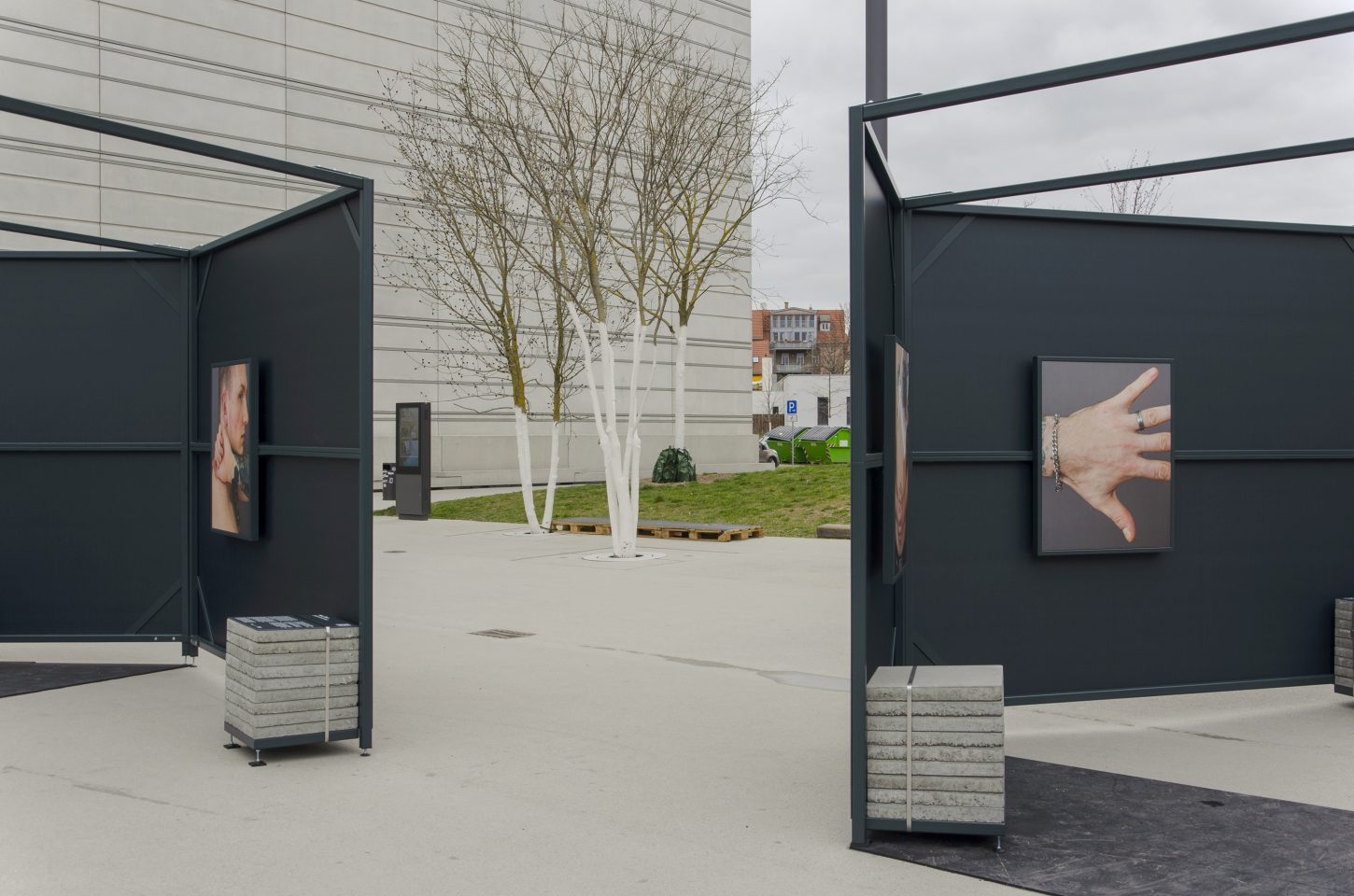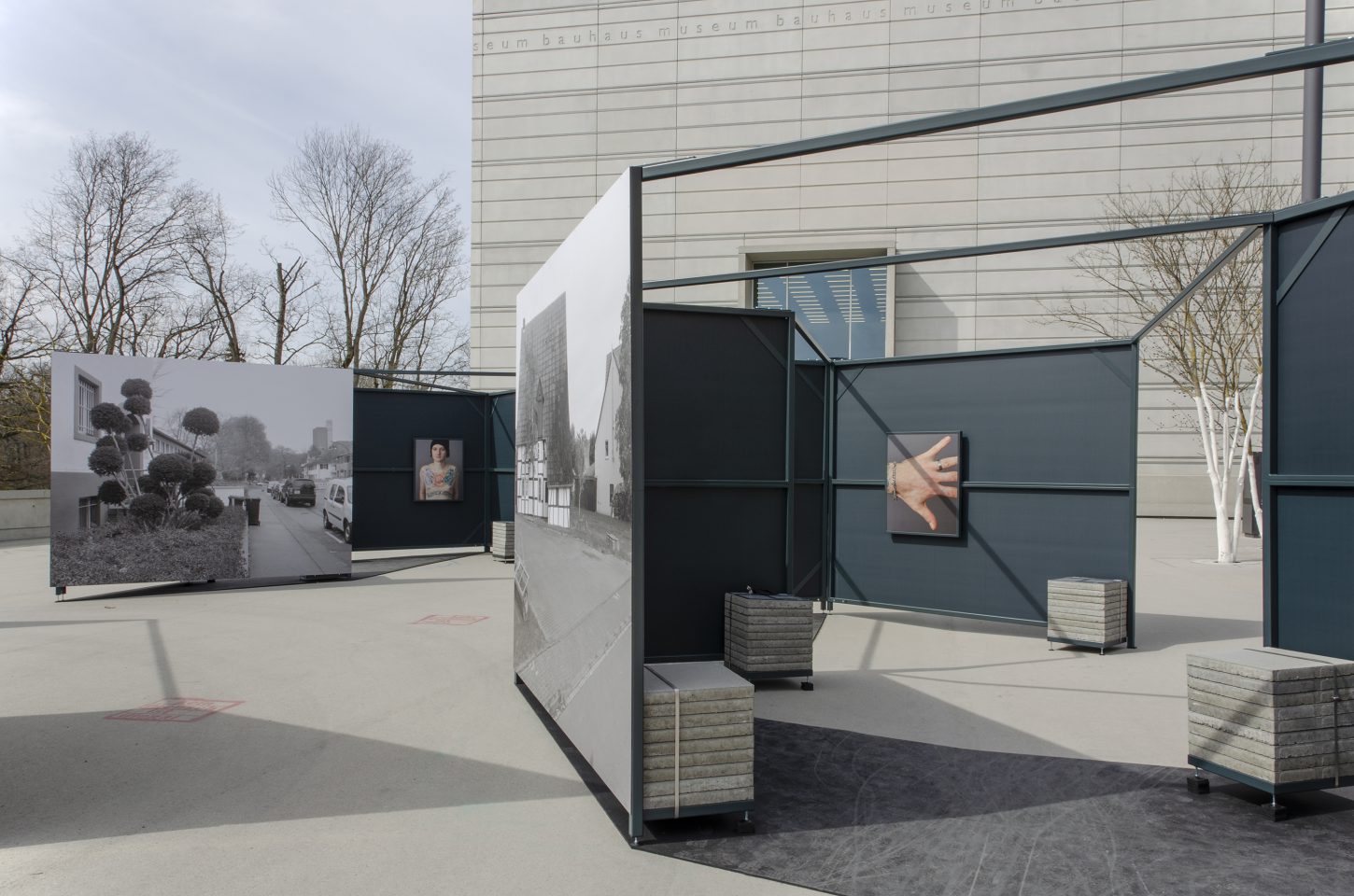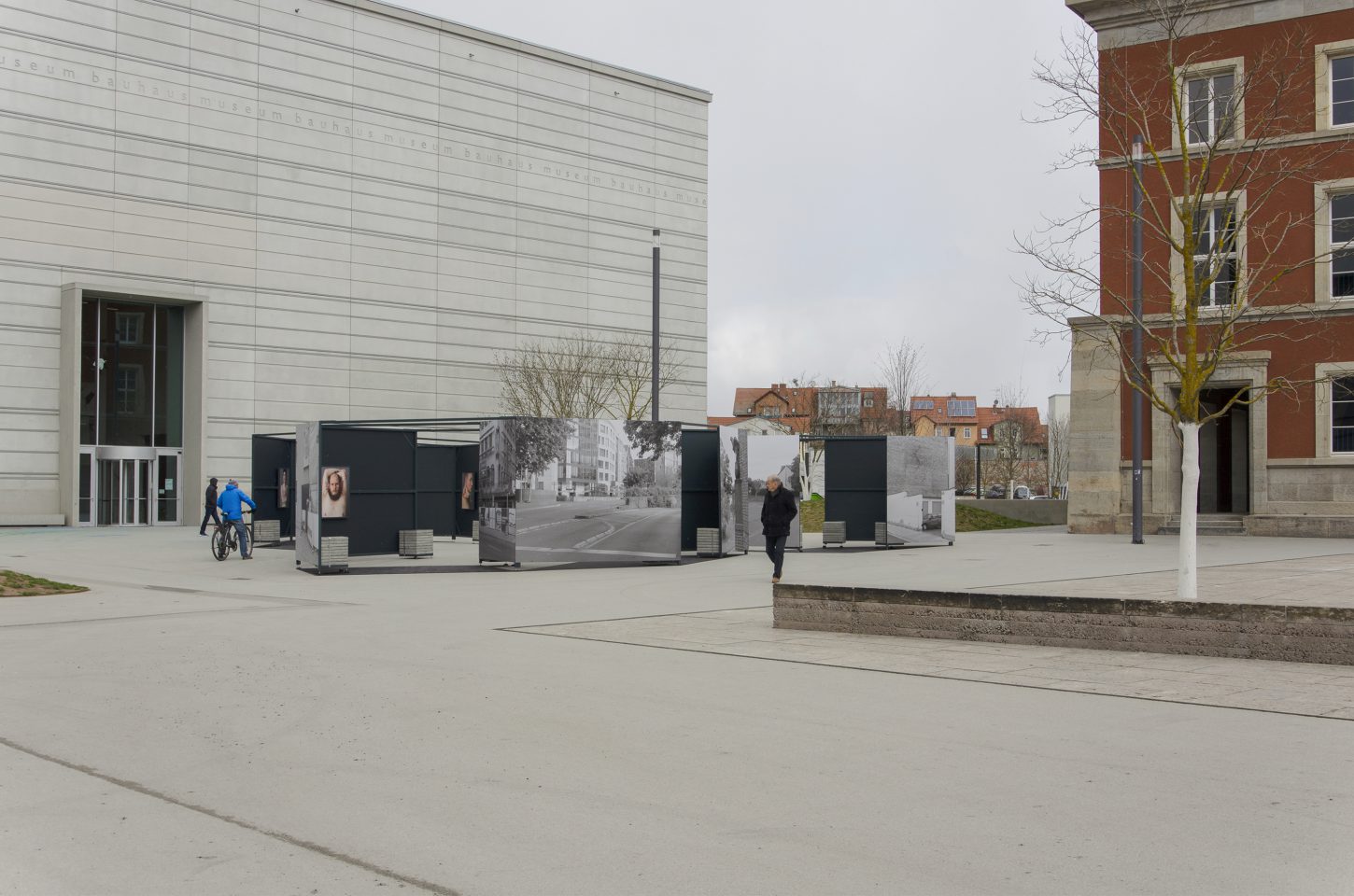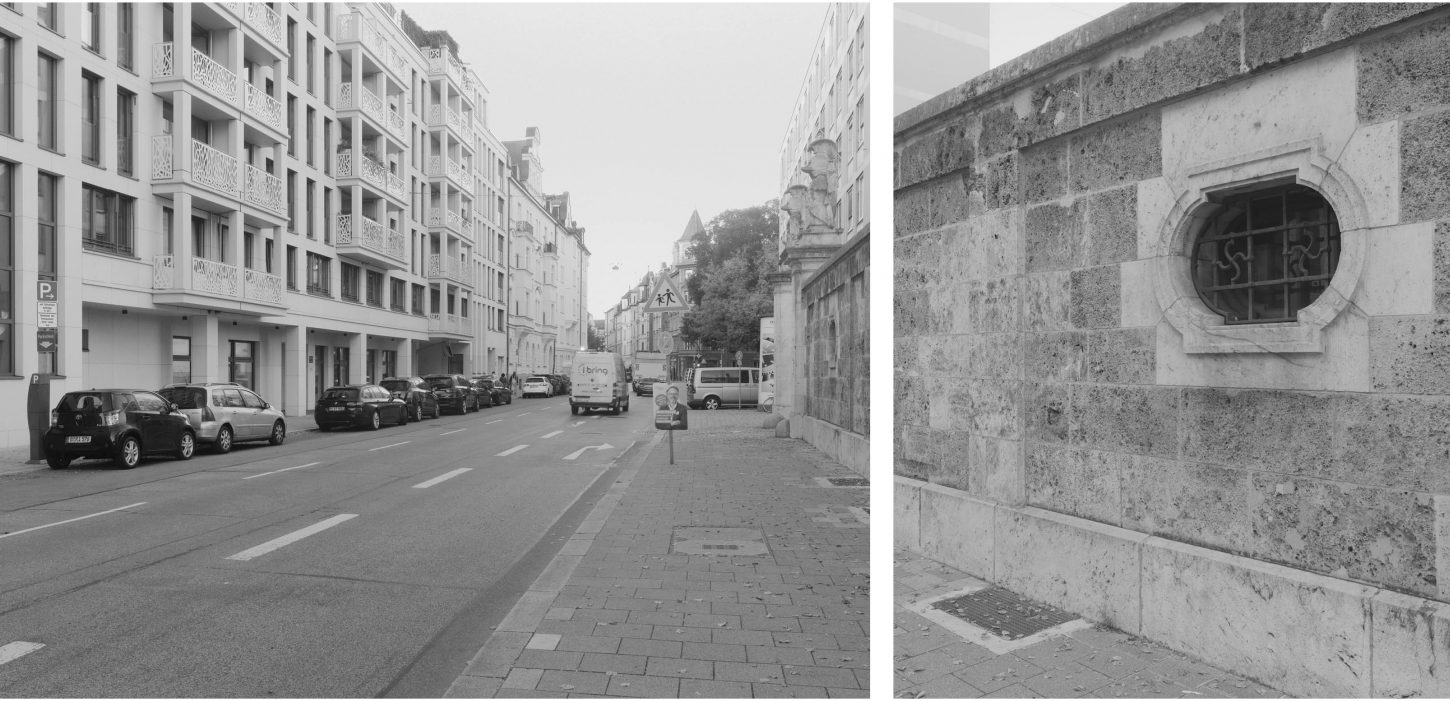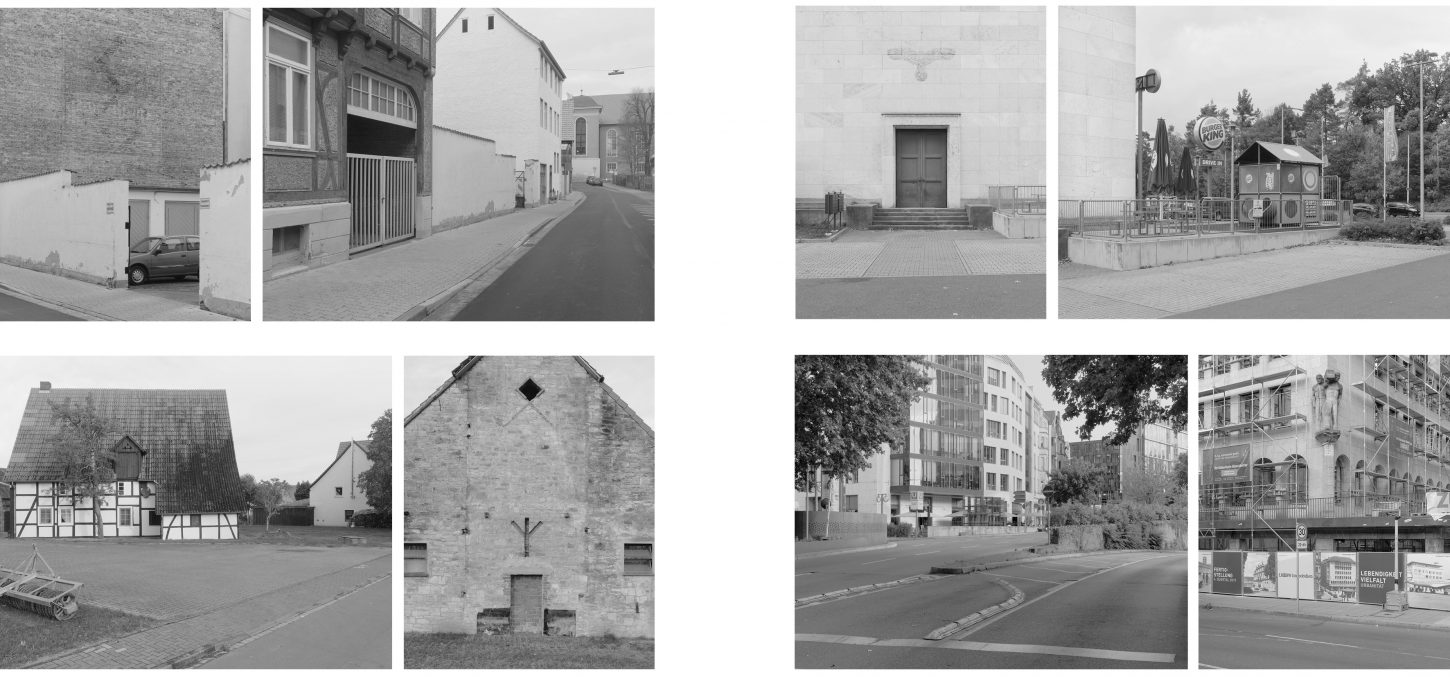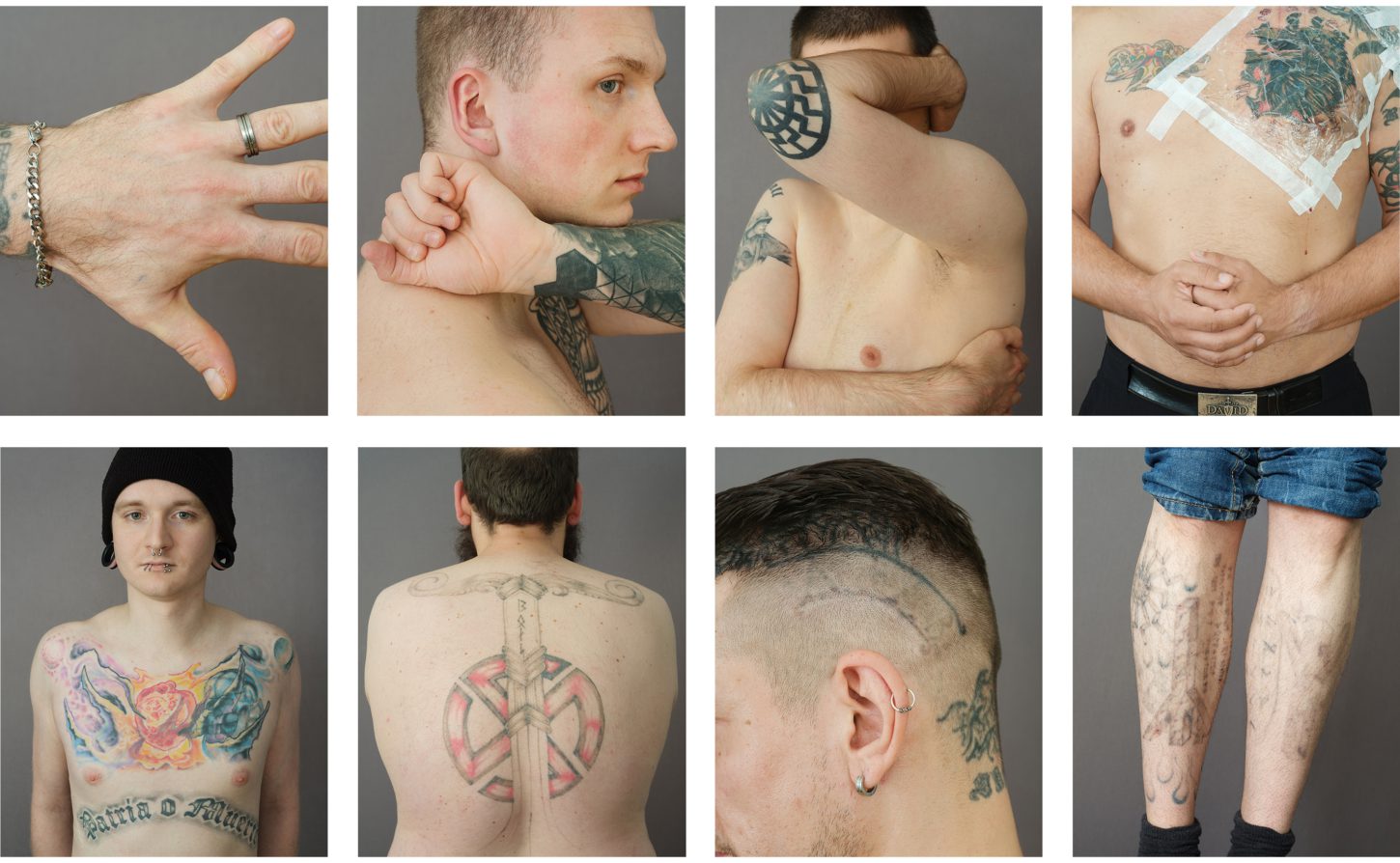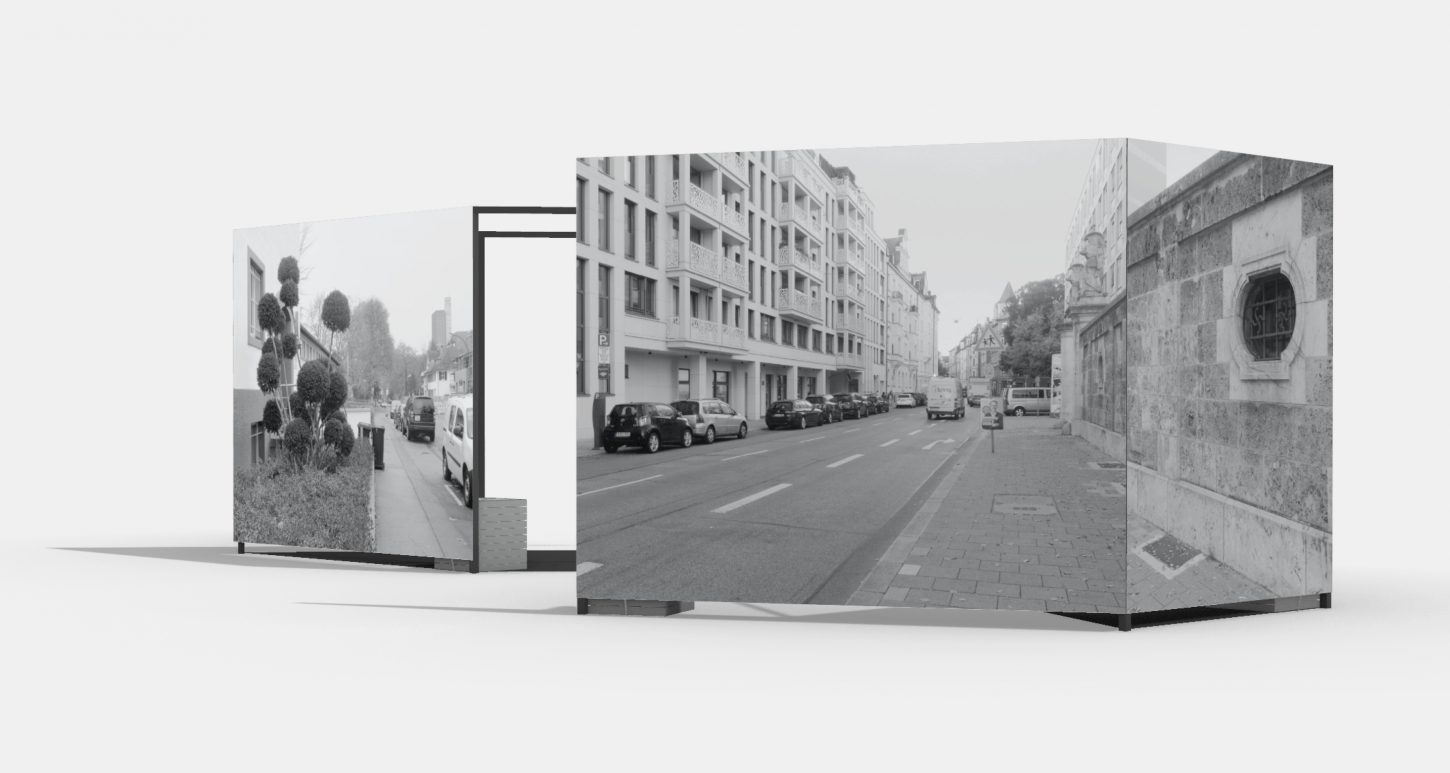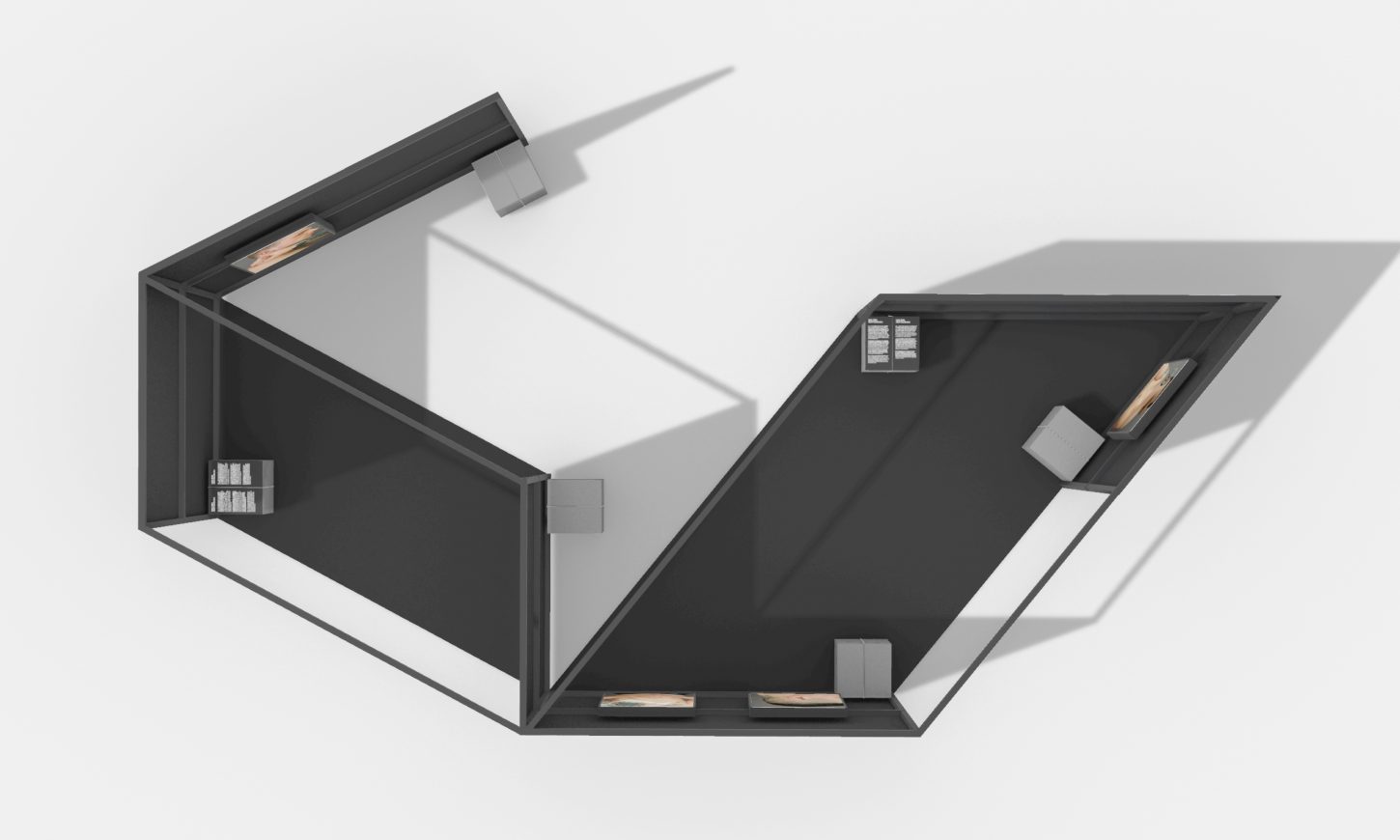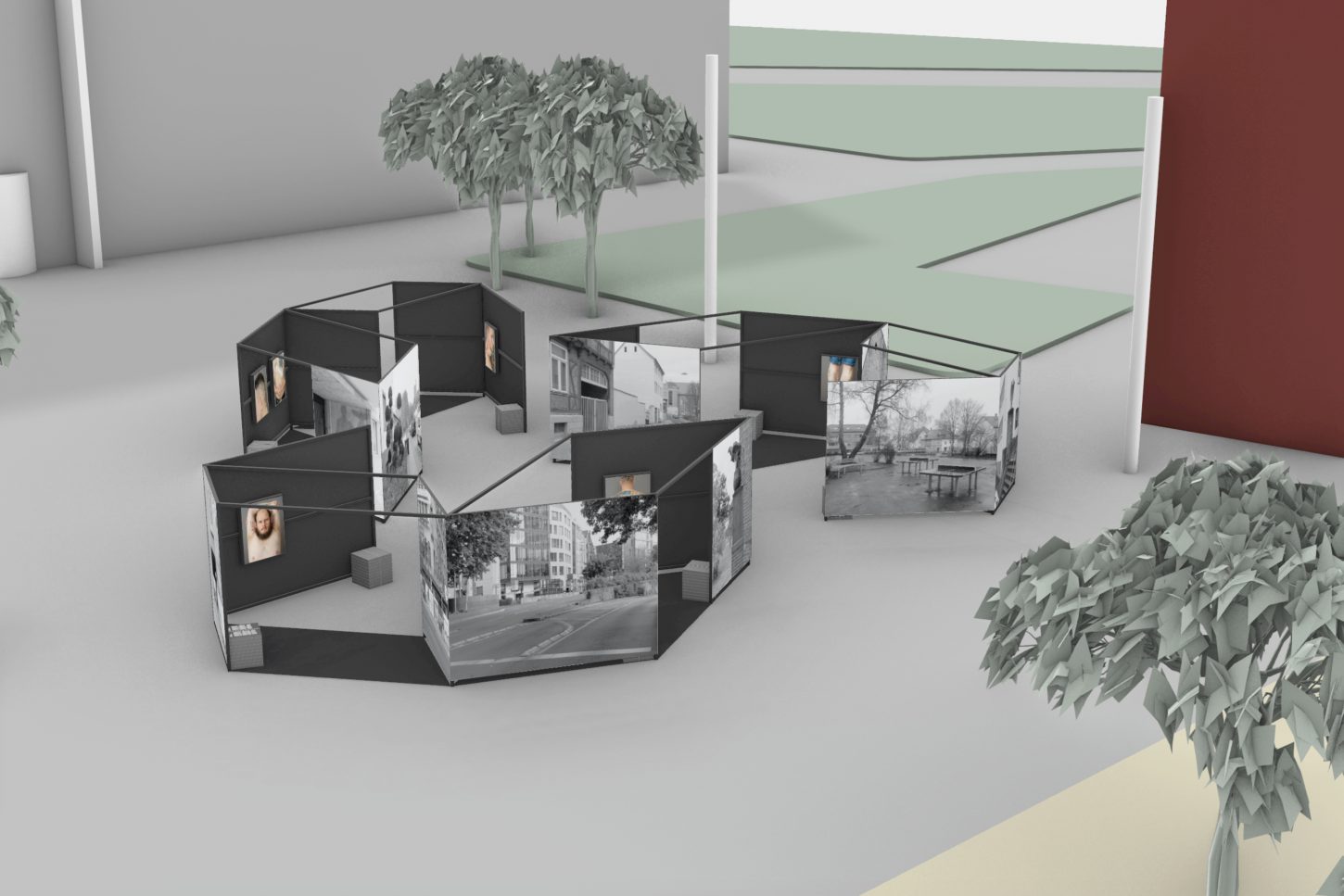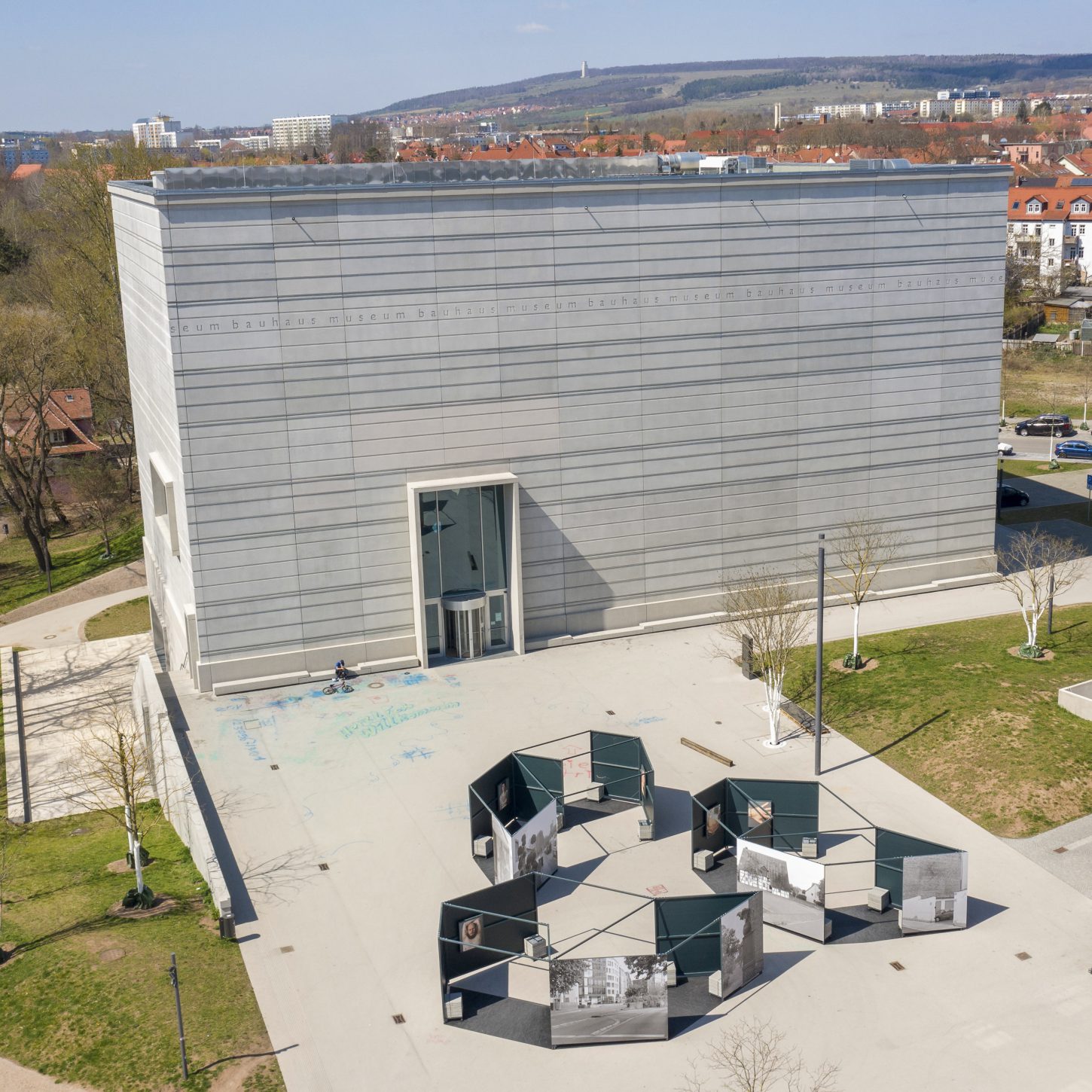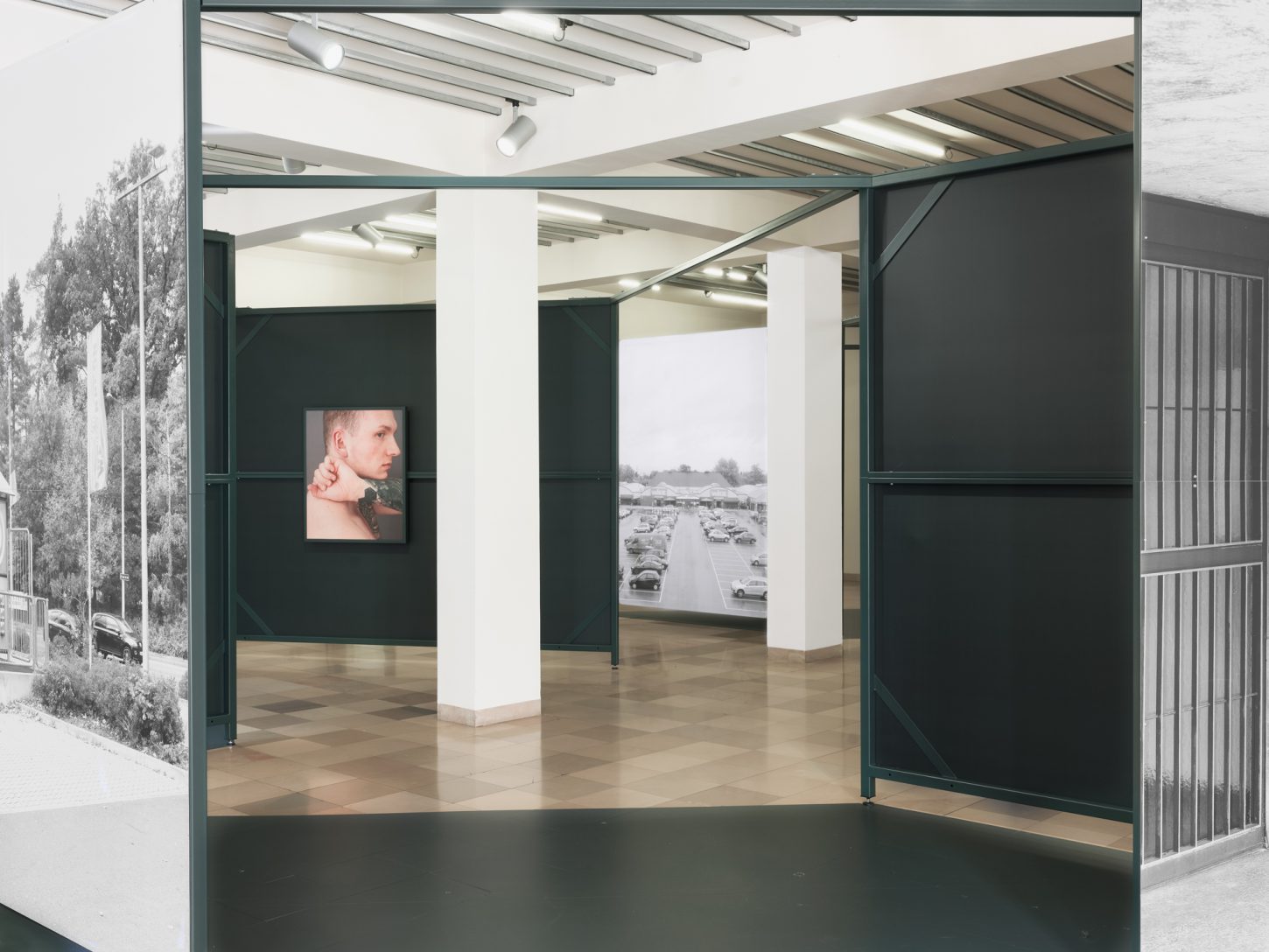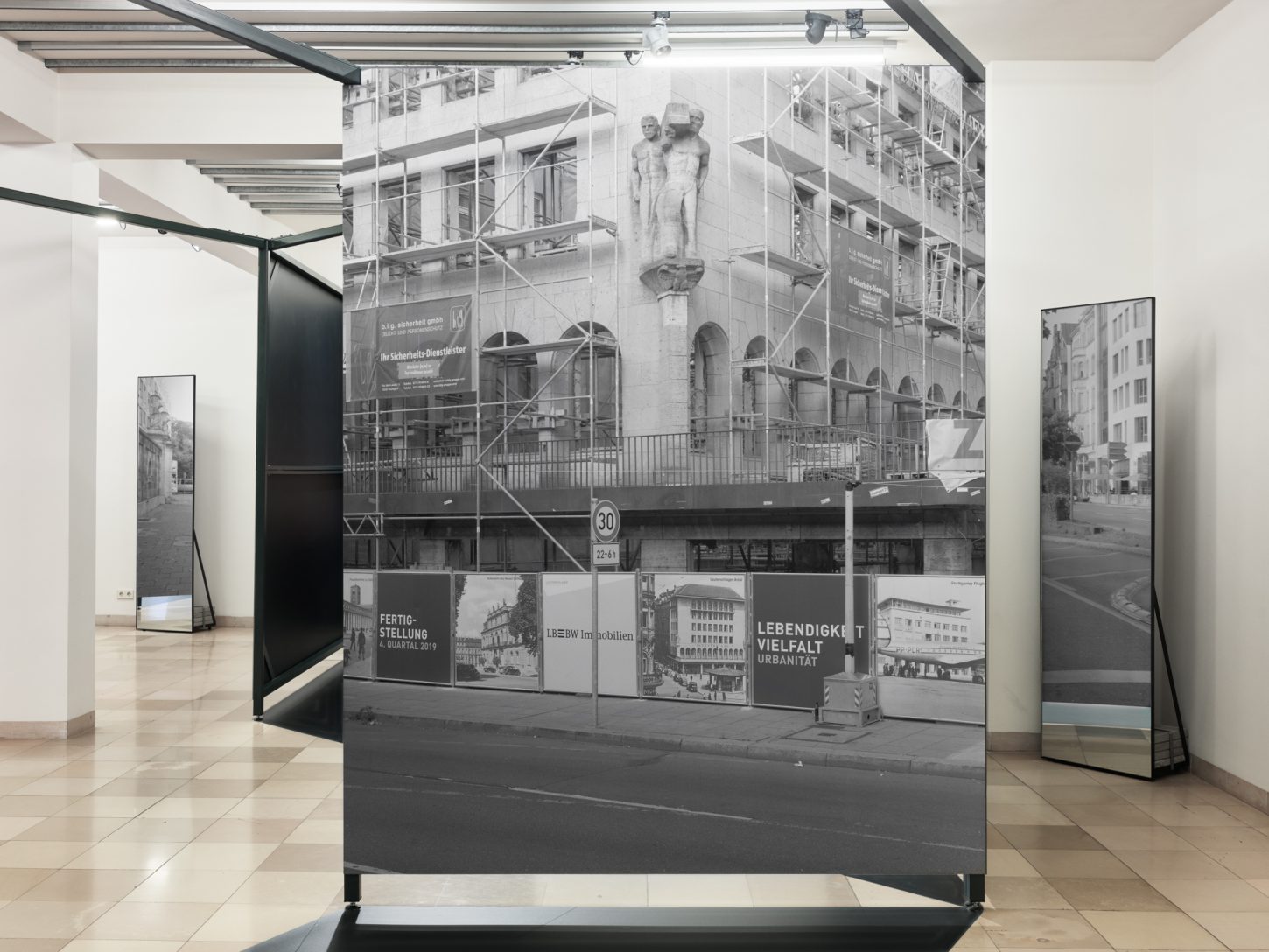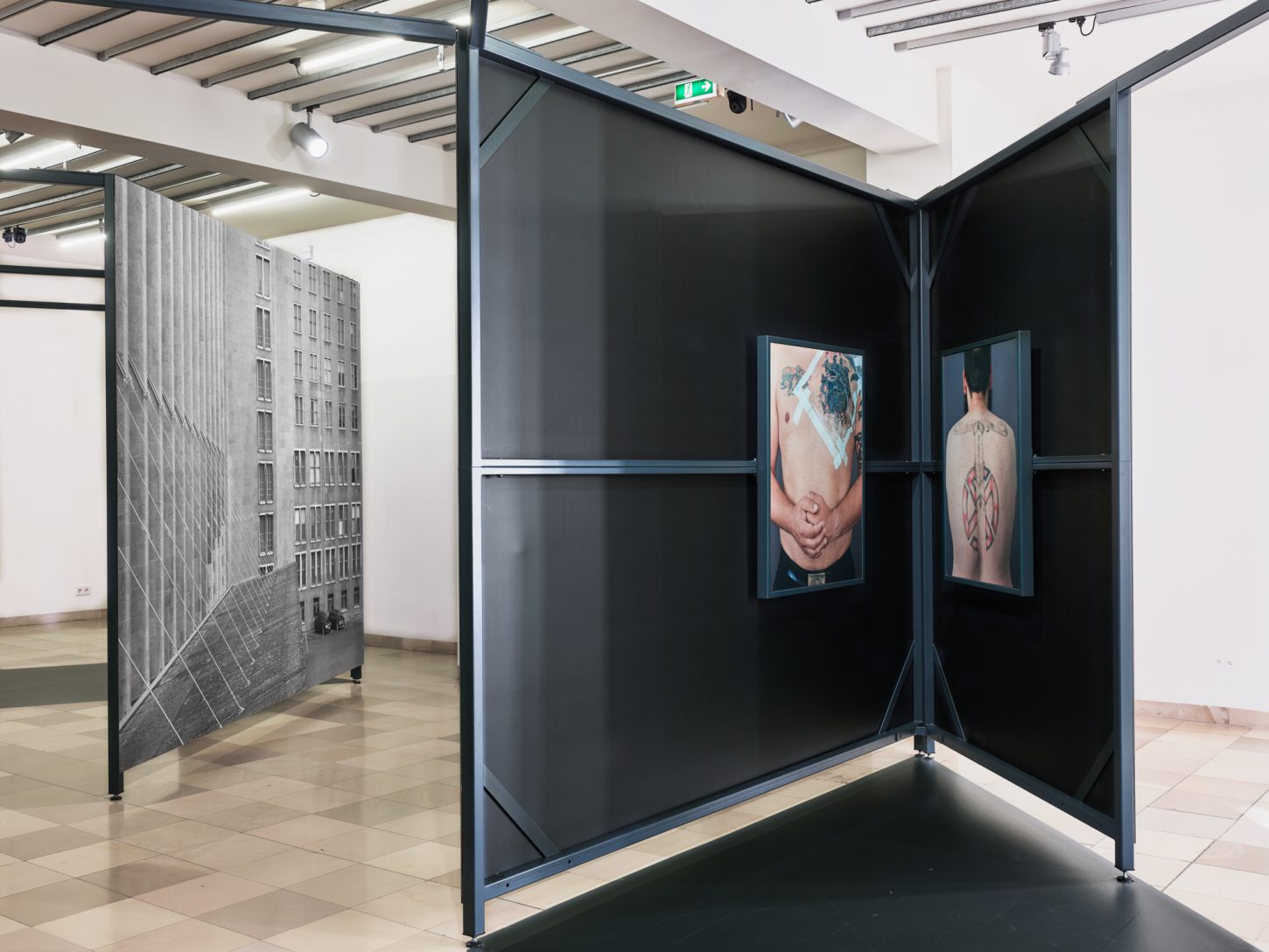‘Haut, Stein’ focusses on national socialist symbology which remains visible to this day. It interrogates persistence, use, and obliteration of these signs in two distinct formats: as the structural ornaments and architecture through which the symbols of national socialism linger in public space; and as tattoos, by which the same signs serve to reaffirm an individual’s commitment to right-wing extremism.
This outdoor exhibition was initiated by the Buchenwald and Mittelbau-Dora Memorials Foundation. It was realized on the 76th anniversary of the liberation of the Buchenwald and Mittelbau-Dora-concentration camps, in cooperation with exit-Deutschland.
Former neo-nazis are portrayed in the process of departing from their precious identities as right-wing extremists. The photographs show tattoo removals or cover-ups, as symbol that for years expressed an identity and a political world view disappearing slowly. The erasure of signs inscribed into the skin is a very deliberate step for those leaving; it is costly, lengthy and painful.
Meanwhile, monogram photographs depict historical Nazi symbols which remain visible at numerous outdoor locations. Despite the process of denazification and attempts at removal, these signs or their traces remain visible in a range of locations, on houses, in decorative bands and in facades. Ganslmeier’s images reveal those fragments as well as examine their wider spatial context in villages, streets and settlements. By situating these individual stories into a social-political context, this work poses the question: to what extent is the German past really past?
